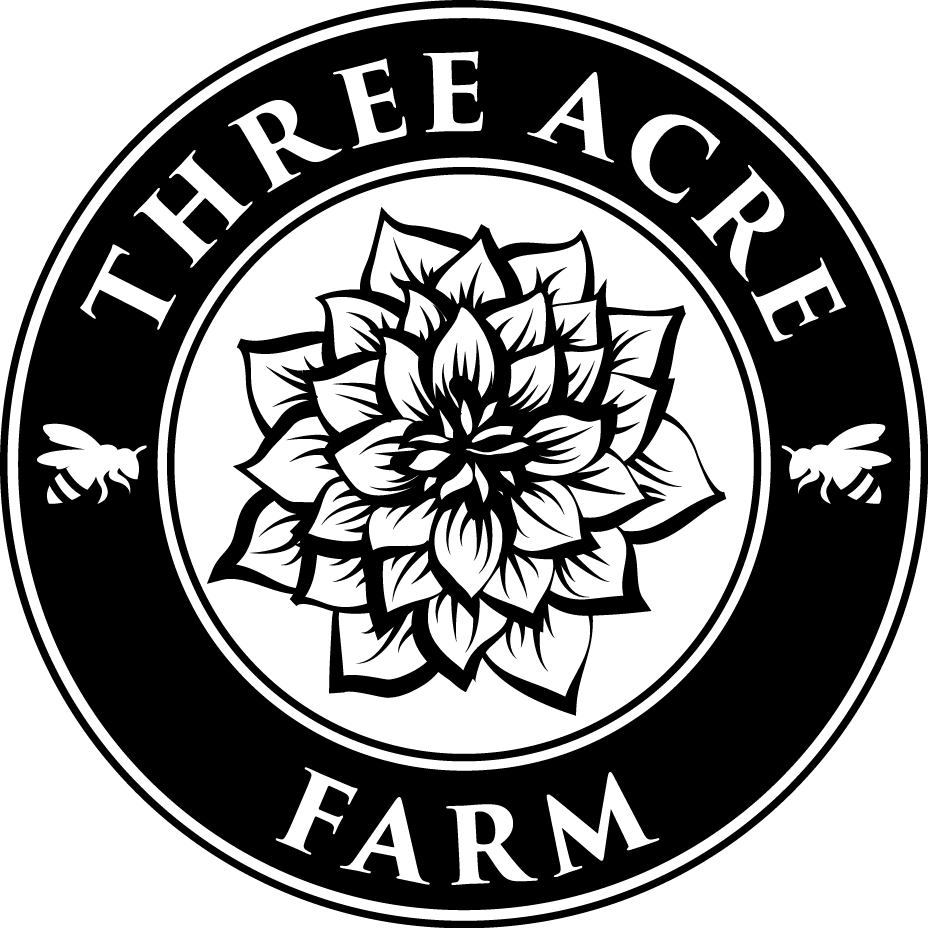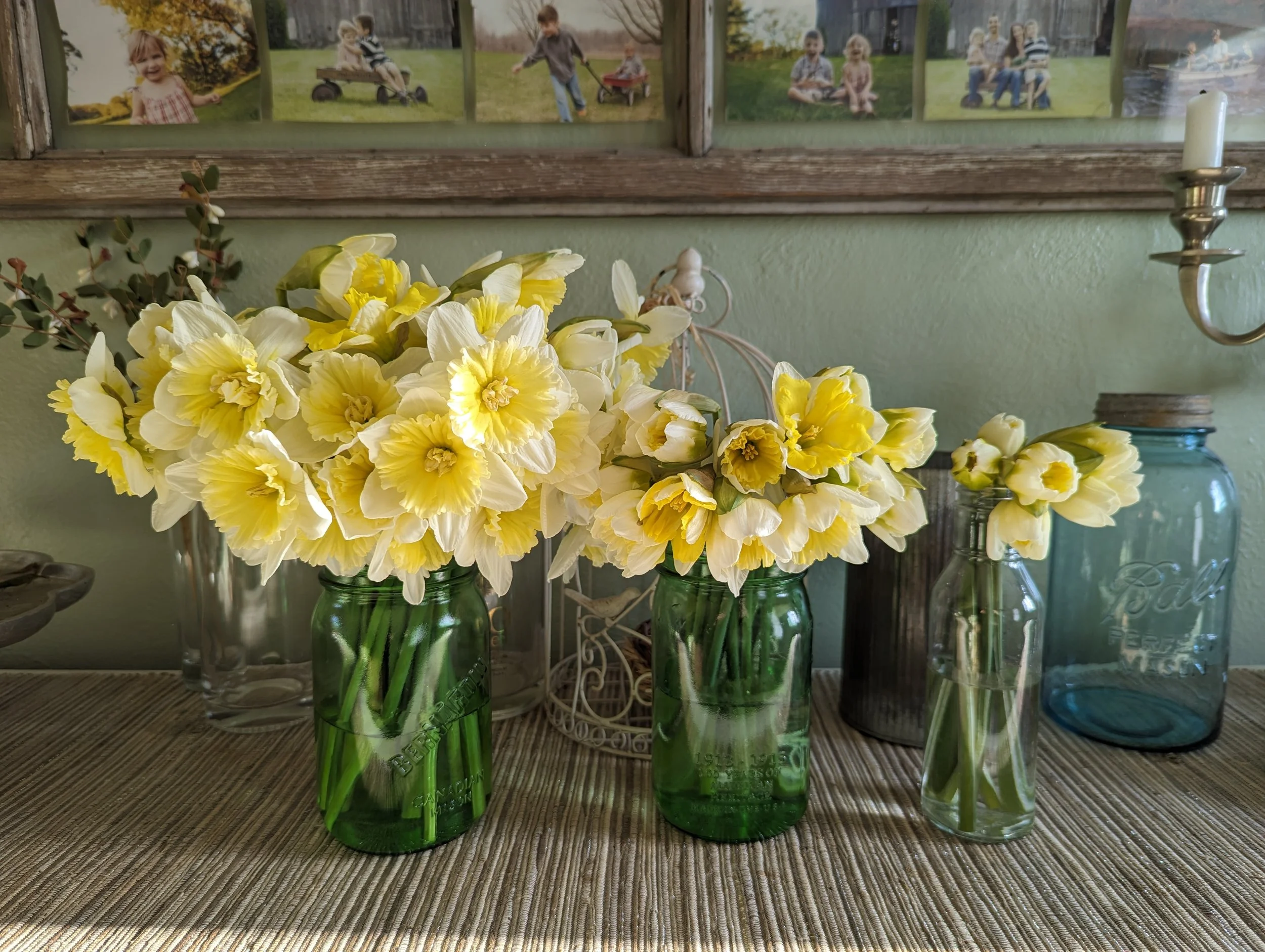How to Grow Daffodils: Your Complete Guide
Here on our Michigan farm, daffodils are the true harbingers of spring. After enduring a long, cold, snowy winter - and even worse, “Mud Season” (ugh!) - the sight of beautiful blooms in April reminds me that the world won't always be ugly, muddy, and depressing. Those cheerful flowers are promises that brighter days are ahead!
In late winter/early spring, I walk the farm each morning searching for the first brave daffodil shoot. What a gift to know that spring is on its way!
First daffodil of the season emerging in early March (aka “Mud Season”)!
Daffodils are steadfast, reliable, and dependable. They are tough, hardy, and they laugh at our inevitable April snowstorms each year and keep blooming cheerfully in the snow (I grow a variety called “Ice King” that always gets snowed on… and it doesn’t mind one bit!).
They look stunning whether planted in your landscape or sitting in a vase on your kitchen table.
Best of all? They're incredibly easy to grow, and they come back year after year with minimal effort.
“Yosemite Valley” Daffodil
Why You Should Grow Daffodils
They're Critter-Proof! One of the absolute best reasons to grow daffodils is that they're mostly immune to hungry wildlife. I've heard so many tales of woe from gardeners who have lost all their tulips to deer and rabbits. Unlike tulips, daffodils contain a natural toxin that animals find unappetizing, so it's highly unlikely any critters will munch on your blooms. If you struggle with deer and rabbits, and fencing isn't an option, it may be best to skip tulips altogether and grow daffodils instead.
Beautiful Variety! There are so many gorgeous daffodil varieties available. While they don't come in the full color range of tulips, they DO feature lovely shades of white, pale yellow, sunny yellow, cream, orange, tangerine, and salmon. You'll find plenty of options to brighten your garden!
Harvest Without Guilt! Unlike tulips, harvesting daffodil blooms doesn't negatively affect their blooming in subsequent years. If you harvest a tulip bloom, the bulb won't produce a flower the following year (you can read all about it in THIS BLOG POST). Daffodils have a slightly different growth habit than tulips, which means you can cut armfuls of flowers for years to come, instead of just once. How wonderful is that?
How to Plant Daffodil Bulbs
Planting daffodils is simple and easy! Here's how to get those bulbs in the ground:
Choose the Right Spot: Select a sunny location that gets at least 6 hours of sunlight with well-draining soil. Daffodils aren't fussy, but they do appreciate good drainage.
Prepare Your Planting Area: Use a bulb planter for individual bulbs or dig a hole or trench if you're planting lots of bulbs at once.
Space Your Bulbs: Plant bulbs pointy side up, about 4-6 inches apart. This gives them room to grow without crowding.
Get the Depth Right: The rule of thumb for planting depth is roughly 3 times the height of the bulb. For example, if your bulbs are about 2 inches tall, plant them about 6 inches deep.
Cover and Water: Backfill the holes or trench with soil to cover the bulbs completely. Water after planting if the soil is dry to help them settle in.
The Golden Rule of Daffodil Care: After the flowers have bloomed in spring, allow the foliage to turn brown and die back completely. This may take up to 6-8 weeks. DO NOT remove the foliage prematurely—this is how the bulb stores energy for next year's blooms! I know it's tempting to tidy up the garden, but resist the urge. Those leaves are working hard behind the scenes to ensure you get beautiful flowers again next spring.
Using Daffodils in Floral Arrangements
Here's something important to know: daffodils ooze a toxic sap from the end of their stems when they're cut. This sap will seep into the vase water and cause other flowers to expire prematurely. But don't worry—I have two solutions for you!
Option 1: Keep Them Solo (My Favorite!) Don't mix daffodils with other flowers. Bunches of mixed daffodil varieties in a vase are absolutely stunning on their own. Their cheerful blooms need no supporting cast!
Option 2: Mix Them Safely If you have your heart set on mixing daffodils with other flowers, follow these steps:
Harvest your daffodils and cut the stems to the desired length for your mixed arrangement.
Place the daffodil stems in a separate jar of water for about an hour. The sap will ooze out into the water, and the stem ends will eventually callous over and stop releasing sap.
After about an hour, pull out the daffodil stems, rinse them off, and add them to your mixed flower arrangements.
Important: Repeat this process if you trim the stem ends of the flowers in your mixed arrangement. Every time you recut the daffodil stems, they'll ooze sap again.
When to Harvest Daffodils
Most people harvest their daffodils much too late. To get the best vase life, harvest the blooms when they are in the “gooseneck stage”. This means the blooms are still closed, but you can start to see them crack open.
In the photo below, you can see the progression of how the blooms open.
The flowers on the right were harvested at the “gooseneck stage” and have been in the vase for a few hours.
The flowers in the middle were harvested 1 day earlier.
The flowers on the left were harvested 2-3 days earlier.
By harvesting at the “gooseneck stage”, you’ll extend the vase life and get to enjoy blooms for a week, instead of mere days.
Harvesting at the “gooseneck stage” also prevents damage to the blooms during harvest. If you allow the blooms to blow wide open, they will get damaged when you harvest them.
Harvesting daffodils is easy - you don’t even need scissors or flower snips! Simply slide your index finger along the stem until your finger is below the surface of the soil. Gently grasp the stem with your hand and slowly pull up. The stem will stretch like a rubber band, then it will pop!
Ready to Plant?
With their cheerful blooms, easy care, and critter-resistant nature, daffodils are a must-have for any garden. Whether you're planting them in drifts across your lawn, tucking them into flower beds, or growing them specifically for cutting, these reliable beauties will reward you with years of spring joy. Happy planting!







